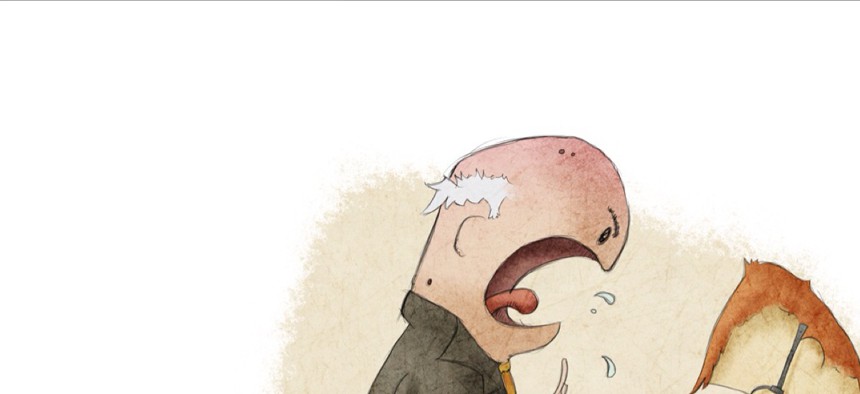
Image via JrCasas/Shutterstock.com
So, the Super Bowl this year is guaranteed to have a winning coach named Harbaugh when John of the Baltimore Ravens and Jim of the San Francisco 49ers square off against each other. It’s the first time brothers have ever faced each other in the big game. It should be a good one and is bound to be entertaining if for no other reason than it will be fun to watch the contrasting styles of each Harbaugh. John is more of the quiet, lower key leader while Jim is unconstrained across the full range of emotion. And, as he proved in the NFC championship game, he is the master of the total freak out.
Late in the game when a challenged call did not go his team’s way, Jim Harbaugh reacted with a sideline tantrum that many have described as epic. He totally freaked out. It was pretty hilarious to watch. (See it here for yourself on a continuous loop which makes it even funnier.)
One of the things that makes the Harbaugh freak out funny is that it was this sudden eruption that was over as quickly as it started. It didn’t really have an impact on anyone other than Jim Harbaugh. It’s a rare occurrence of a leader freaking out without creating any actual damage.
Of course, there’s not much entertainment value when an executive leader freaks out in the workplace. You’ve likely seen it, been on the receiving end of it or maybe even done it. An executive loses his or her cool and lets it rip. Because of their high profile and the size of their leadership footprint, executives can cause a lot of damage when they freak out.
Here’s what happens when executives freak out and some thoughts for leaders on how to avoid freaking out:
The Impact of Executive Freak Outs –
Lost productivity ripples throughout the organization: When an executive freaks out, productivity goes out the window. People stop what they’re doing and gawk. Or, they get too scared to do anything. Or, trying to head off another freak out, they start doing everything – usually pointless things – trying to anticipate what the exec really wants. In each of these cases, the important work isn’t getting done.
Eye rolls of disengagement: When the freak out is an executive’s go to move, the people around him or her eventually disengage. They’ve seen it so many times before so they just roll their eyes (either visibly or to themselves) and move on. It was just another unpleasant episode in a string of episodes that drain everyone’s energy and enthusiasm.
Negative role modeling: Unfortunately, after witnessing regular executive freak outs, some in the organization may conclude that’s how leaders roll and adopt the practice themselves. Pretty soon, this negative role modeling leads to a toxic culture in which nothing meaningful gets done.
How to Avoid Freaking Out Yourself -
If you find yourself looking in the mirror and see someone who’s engaged in a few freak outs (I have), here are three quick questions to ask yourself the next time you feel one coming on:
How much does this really matter? A few years ago, Suzy Welch wrote a book called 10 – 10 – 10. The big idea was for any seemingly important situation, ask yourself, “Will this matter 10 minutes from now? Will this matter 10 days from now? Will this matter 10 years from now?” One thing for sure is it’s not worth freaking out over things that won’t matter 10 minutes from now.
Does this matter to anyone besides me? This is the ego check question. Is what you’re about to freak out about all about you or is it actually for the good of the enterprise?
What alternatives to a freak out are available for making my point? This just in – there are lots of alternatives.
Let’s hear your perspective? What are the impacts of executive freak outs? How can they be stopped before they start?
Image via JrCasas/Shutterstock.com







